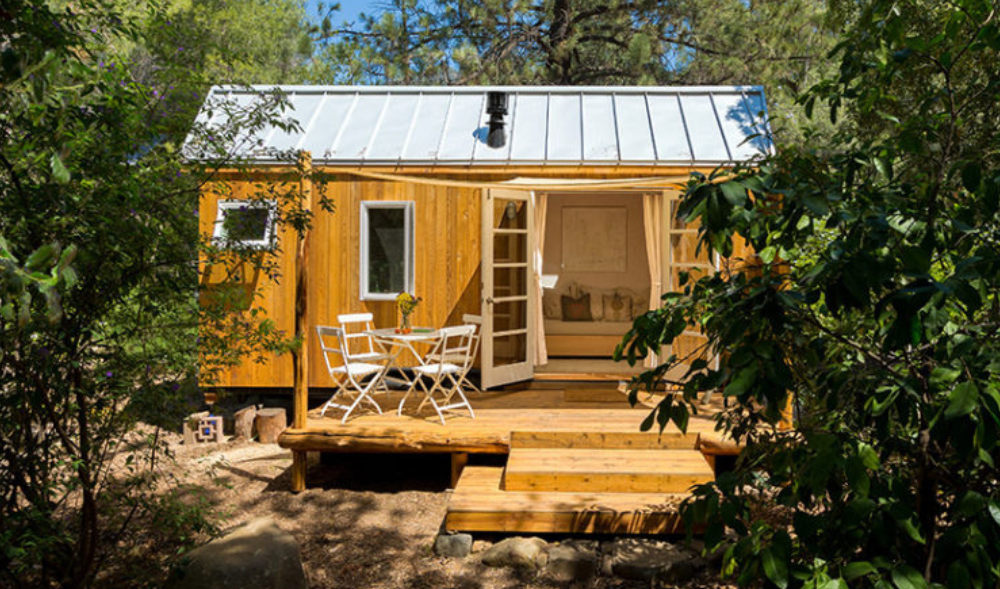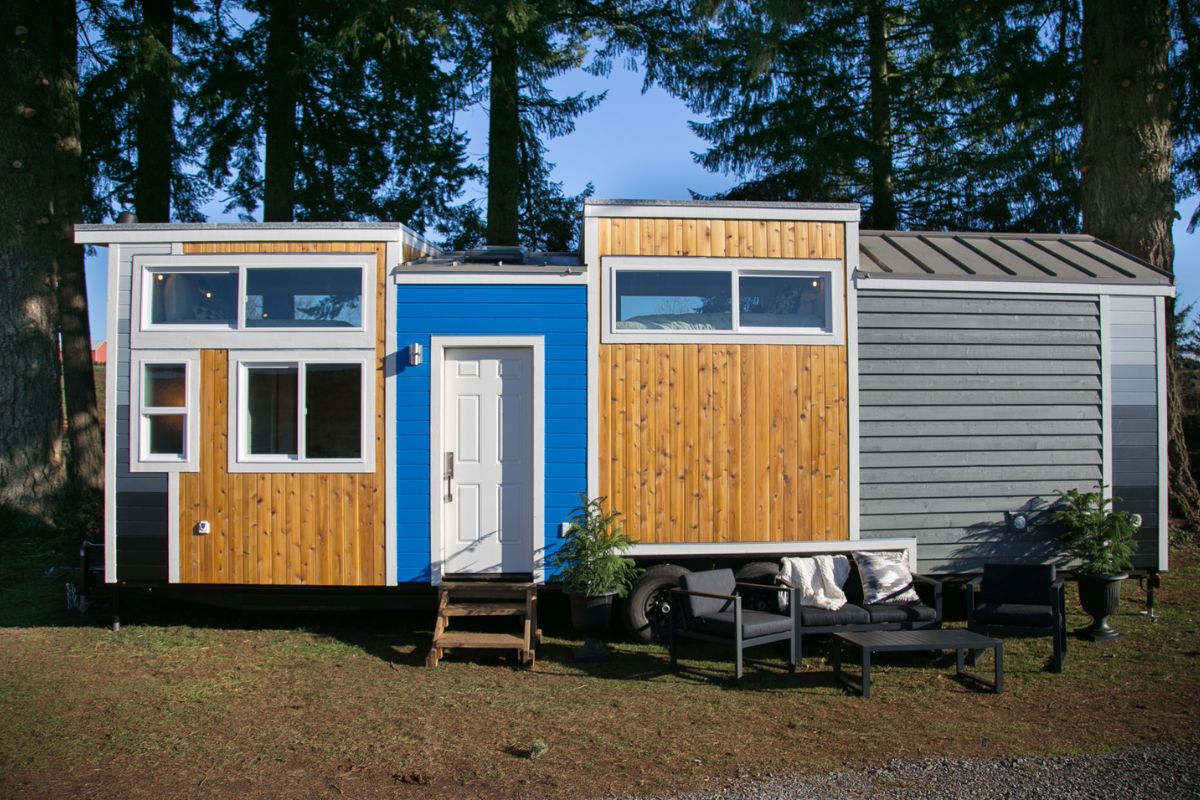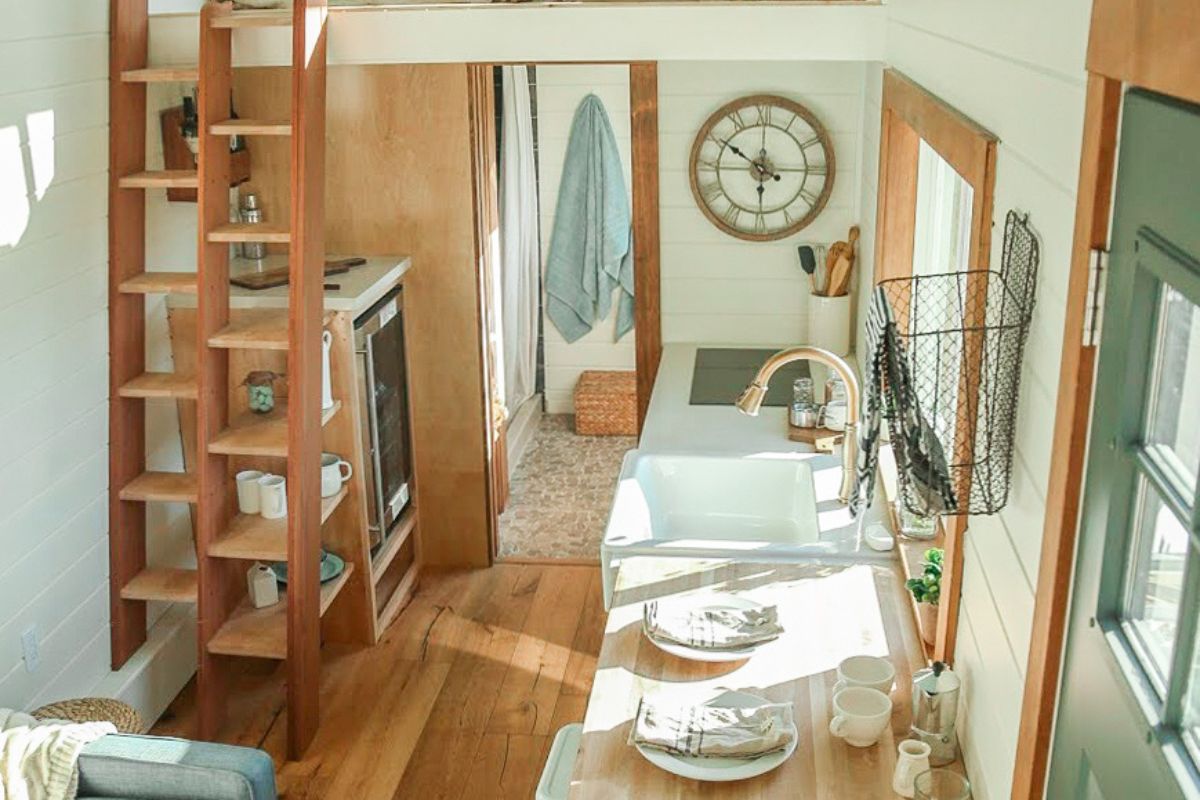Japanese tiny house design fuses minimalist living with harmony and simplicity, drawing from the philosophy of "wabi-sabi." You'll find clever features like sliding doors and multifunctional furniture that maximize space while promoting a tranquil environment. Large windows invite nature indoors, enhancing your living experience.
By embracing natural materials, these designs create a seamless connection to the outdoors. Each home offers inspiring solutions for a balanced lifestyle, encouraging you to think differently about your living space and its potential.
Check out our tiny house plans to help you build your dream tiny home.
Key Takeaways
-
Japanese tiny house design emphasizes simplicity, integrating the philosophy of "wabi-sabi" to celebrate imperfection and transience.
-
Sliding doors and multifunctional furniture maximize space and flexibility, embodying the minimalist principle of "less is more."
-
Large windows and outdoor connections enhance natural light, creating a sense of openness and tranquility within small living areas.
-
Natural materials like wood and stone foster a connection to nature, promoting a mindful and serene lifestyle.
-
Inspiring examples like Muji Hut and Gifu House showcase balanced aesthetics and practicality, encouraging quality over quantity in living spaces.
The Philosophy of Minimalism in Japanese Culture
While you might think of minimalism as a modern trend, its roots run deep in Japanese culture, where simplicity is celebrated as a pathway to tranquility and harmony. Japanese aesthetics emphasize the beauty in restraint, often encapsulated in concepts like "wabi-sabi," which finds value in imperfection and transience.
You’ll notice this philosophy in traditional tea ceremonies and Zen gardens, where every element serves a purpose, inviting introspection. By embracing minimalism, you create a serene environment that fosters mindfulness and connection to nature. This approach encourages you to declutter not just your physical space but also your mind, promoting a lifestyle that prioritizes experiences over possessions. Ultimately, it’s about finding balance and appreciating the essence of life in its simplest form.

Key Features of Japanese Tiny House Design
As you explore Japanese tiny house design, you'll quickly notice that each feature reflects a deep respect for space and function. One prominent aspect is the use of sliding doors, or "fusuma," which allow for flexible room configurations while maximizing floor area. Natural light plays an essential role; large windows and open layouts create an airy atmosphere.
You’ll also appreciate the integration of outdoor spaces, blurring the lines between indoor and outdoor living. Traditional tatami mats provide both comfort and a sense of balance. Additionally, multifunctional furniture often serves multiple purposes, embodying the principle that less is more. Every detail, from the minimalist aesthetic to the thoughtful materials, promotes harmony, making these tiny homes both beautiful and practical.
Innovative Space-Saving Solutions
When you step inside a Japanese tiny house, you'll immediately notice the clever space-saving solutions that maximize utility without sacrificing comfort. Multifunctional furniture, like fold-out tables and Murphy beds, transforms living areas into versatile spaces. Built-in storage is ingeniously integrated into walls, under stairs, and even within furniture, ensuring every nook serves a purpose.
Sliding doors replace traditional hinges, allowing for seamless changes between rooms while saving precious floor space. Additionally, modular designs enable you to customize your layout according to your needs. These innovative elements not only enhance functionality but also create a sense of openness, making even the smallest areas feel expansive. Embracing these solutions, you’ll find that minimalism can indeed coexist with a fulfilling lifestyle.
Integrating Nature Into Tiny Living
Integrating nature into tiny living creates a harmonious balance that enhances your overall well-being. By incorporating natural elements, you can transform your limited space into a serene oasis. Consider large windows that invite sunlight and provide views of greenery, making your home feel more expansive.

Use natural materials like wood and stone for finishes; they not only create warmth but also connect you to the earth. Indoor plants can purify the air and uplift your mood, while vertical gardens utilize wall space beautifully. Embrace outdoor living with small decks or patios that extend your living area, fostering a seamless shift between indoor and outdoor environments. These thoughtful integrations cultivate tranquility and inspire a simpler, more mindful lifestyle.
Inspiring Examples of Japanese Tiny Houses
Japanese tiny houses exemplify innovative design and functionality, showcasing how limited space can be transformed into beautifully efficient living environments. Take, for example, the Muji Hut, a minimalist structure that emphasizes simplicity and natural materials, offering a serene retreat in nature.
Then, consider the “Kamikatsu House,” which incorporates a unique waste management system, promoting sustainability within its compact frame. Another inspiring model is the “Gifu House,” featuring sliding walls that create flexible living areas, adapting to your needs throughout the day. Each design reflects an artistic balance between aesthetics and practicality, encouraging you to embrace a lifestyle that prioritizes quality over quantity. These examples not only inspire but also challenge conventional notions of space and living.
Check out our tiny house plans to help you build your dream tiny home.
Conclusion
In embracing Japanese tiny house design, you tap into a rich philosophy that celebrates simplicity and harmony. By prioritizing minimalist living, you not only create an inviting space but also cultivate a deeper connection with nature and your surroundings.
With innovative space-saving solutions and thoughtful design features, these homes inspire a lifestyle that values quality over quantity. As you explore this unique approach, you’ll discover that less truly can be more, enriching your life in unexpected ways.






Share: